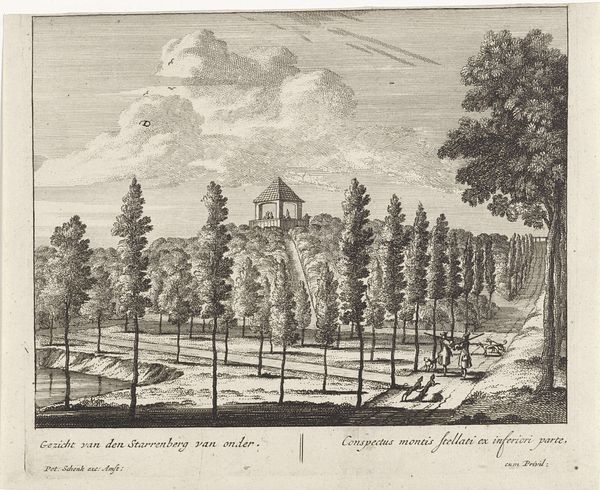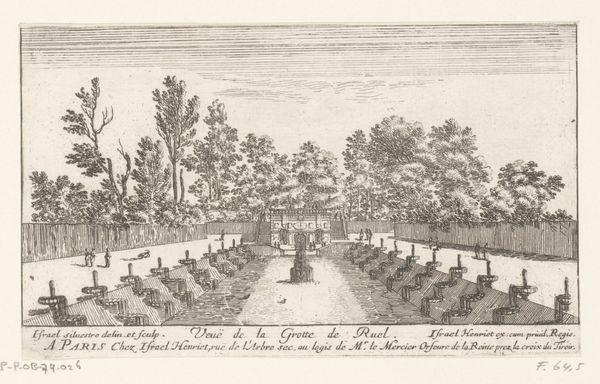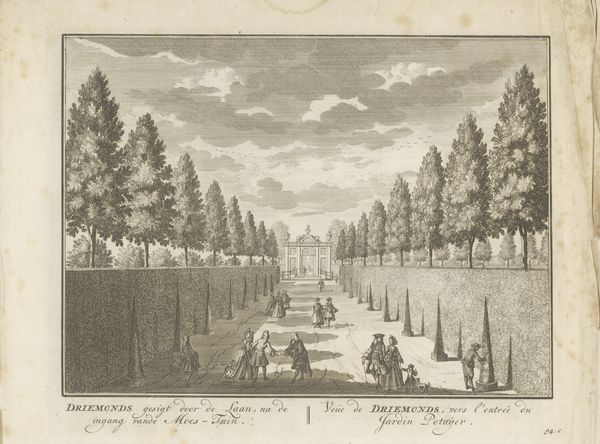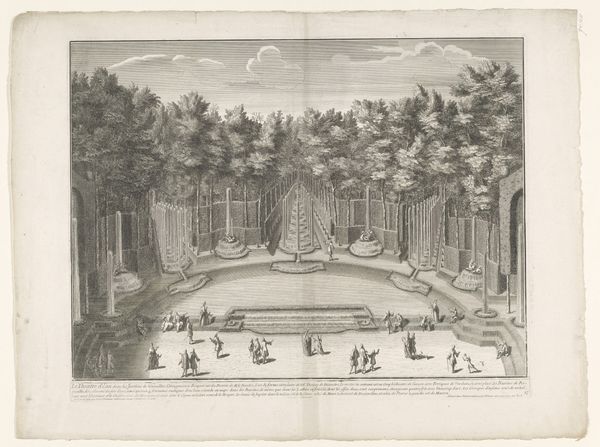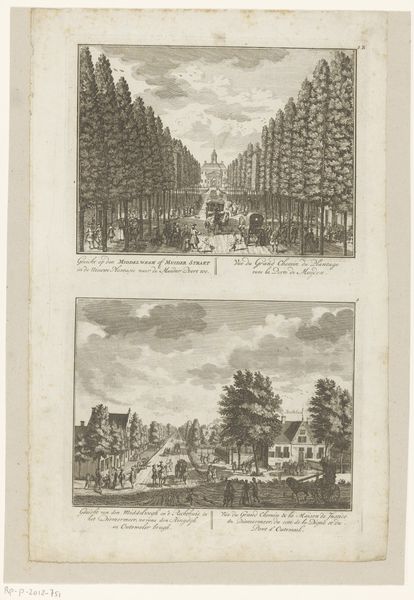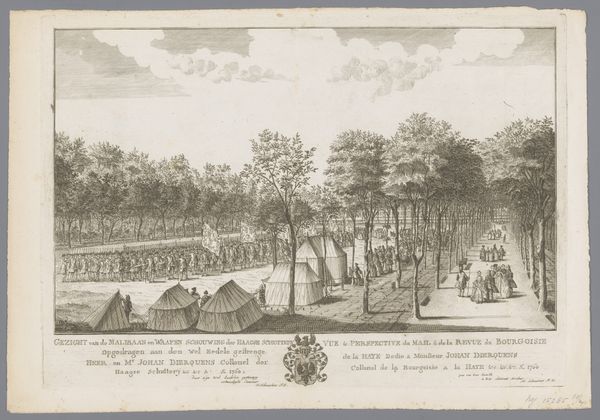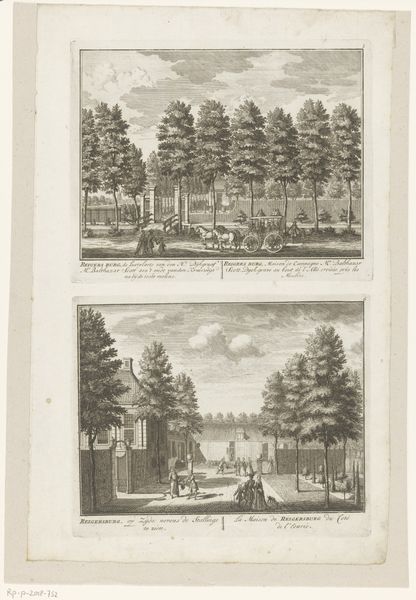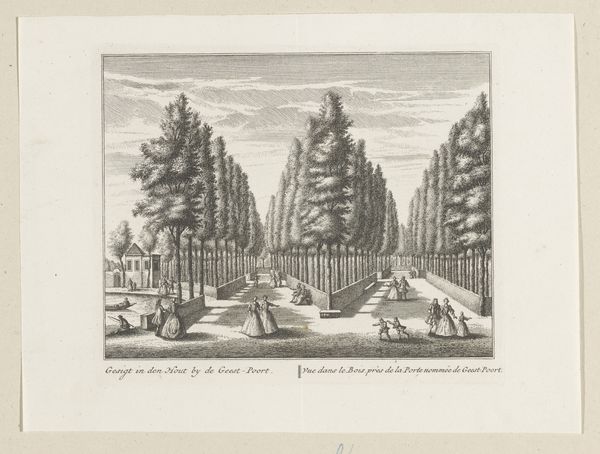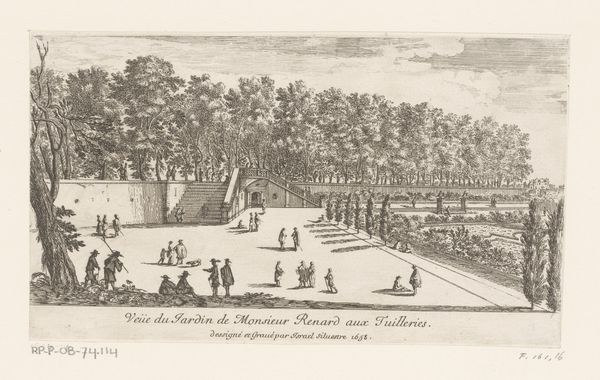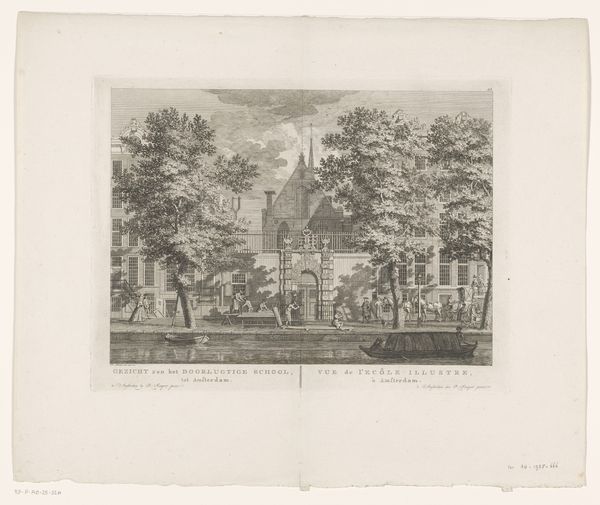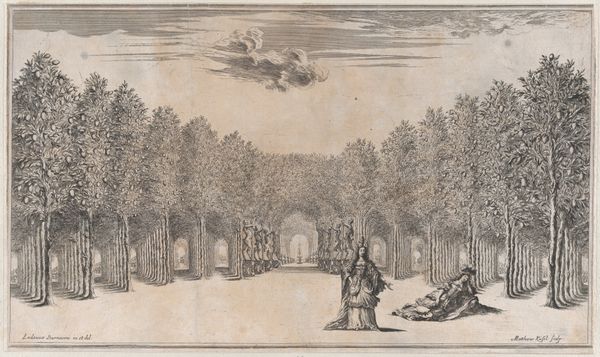
print, engraving
#
baroque
# print
#
landscape
#
engraving
Dimensions: height 170 mm, width 207 mm, height 163 mm, width 202 mm
Copyright: Rijks Museum: Open Domain
Editor: So, this is an engraving titled "Buitenplaats Quoerendo en gezicht op de Ringdijk," dating roughly from 1725 to 1768. It's anonymous, and held at the Rijksmuseum. What strikes me is the intense order and control over nature depicted here, a kind of constructed paradise. How would you interpret this work? Curator: It's fascinating to see the Quoerendo estate depicted this way. For me, the engraving offers a window into the social aspirations and power dynamics of the Dutch Golden Age, particularly reflected in the display of controlled nature and landscape. These weren't just gardens; they were statements. Consider how these designed landscapes functioned almost as extensions of the home itself. Editor: An extension of the home? Could you elaborate? Curator: Think about it: gardens like this one were stages for social interaction, for demonstrating wealth and taste. The manicured lawns, the geometrically arranged flowerbeds, and the precisely placed trees…they all communicated a certain status. This order imposed upon nature was a visual representation of social order, of hierarchy. Also, how do you see the figures placed within this garden scene? What is the social situation the artist depicts? Editor: Well, the figures seem to be leisurely strolling and admiring the view... perhaps reflecting how this manicured scene allowed for people of stature to admire their impact on their surroundings. Curator: Precisely. Landscape in art then served to create a pictorial relationship between ownership, territory and dominion. We can learn to see it as part of a visual language legitimizing a social structure. It is intriguing how the meaning and context surrounding land and property is represented within artistic representation. Editor: That's a perspective I hadn't fully considered. It really sheds light on the relationship between art and society back then. I’ll never look at a manicured garden the same way again. Curator: Indeed! By understanding these artworks in their social and historical context, we can gain richer insights into the values and priorities of the society that created them.
Comments
No comments
Be the first to comment and join the conversation on the ultimate creative platform.
